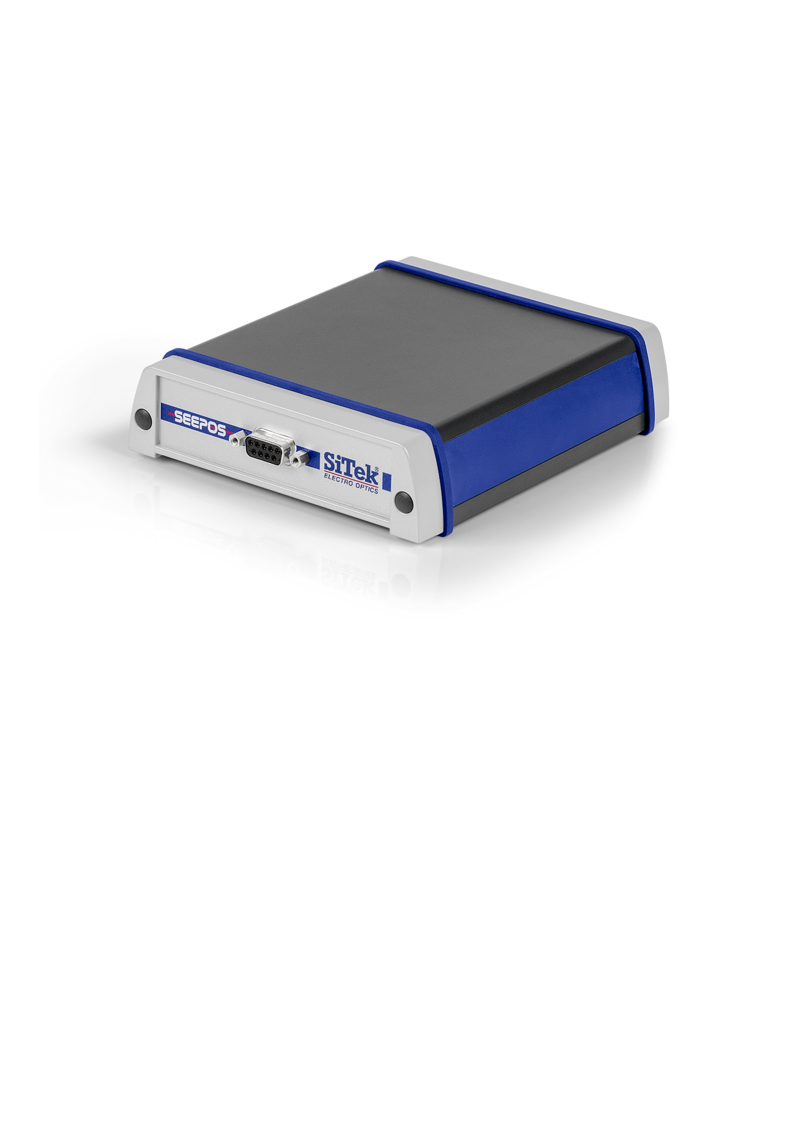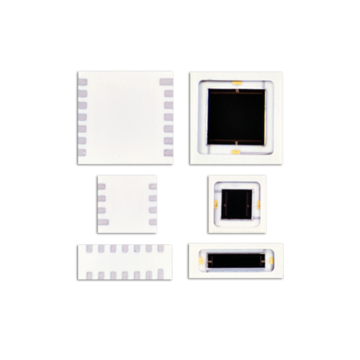Working principle of a PSD
A position sensitive detector (PSD) works like a normal photodiode. The laser that falls upon the active area generates a photo current that flows in the direction of the p and n areas. Unlike a photodiode, a PSD possesses several electrical contacts. This results in a distribution of the photo current among the contacts, depending on the position of the laser spot.
Position calculation
The position can be calculated by the difference in current of two opposing contacts. When the total current is normalized, the position signal no longer depends on the incoming laser intensity. Unlike pixel elements (CCD), the resolution of position sensitive detectors is not restricted by the pixel size nor is an extensive computer analysis necessary. Segmented position detectors such as differential and quadrant detectors can only measure distances up to the size of the beam diameter.
Advantages
A PSD, however, is suited for measuring larger distances across the whole active surface. Form, size, and intensity distribution of the laser spot are to a large extent inconsequential. The power center of the laser spot determines its position.
Measurement
A one dimensional PSD makes continuous detection of the position of a laser spot along one axis possible. It possesses three contacts.
The position is calculated using the following formula:
Y = L / 2 x (Y1-Y2 / Y1+Y2)
Types of PSDs
In addition to the standard PSD with a side length from 2.5 to 60 mm, UV and YAG optimized detectors, PSDs with integrated light scatter suppression (NT series) and PSDs with increased spectral sensitivity (ES series) are available.
Not only that but position sensitive detectors can be equipped with an anti-reflection coating. The manufacturer can provide calibration data for all PSDs, which contains the linearity of the detector.
Technical Details
The very long one-dimensional PSDs have a position linearity of typically +/- 0.1% and rise times of only a few µs. For this reason they allow a large measurement range for position sensing applications based on the triangulation method.
Our partner SiTek
Our Swedish partner SiTek is the market leader in high quality position sensitive detectors (PSDs). In addition to unrivaled quality regarding linearity and speed, SiTek is also setting new standards regard size. The one-dimensional PSD 1L45_SU69 measures 45 mm x 3 mm, the 1L60_SU43 even 60 mm x 3 mm.
Contact
Downloads
- 1L20UV_CP3 - High Linearity Position Sensing Detector
- 1L10UV_CP2 - High Linearity Position Sensing Detector
- 1L5UV_CP2 - High Linearity Position Sensing Detector
- 1L2,5UV_CP2 - High Linearity Position Sensing Detector
- 1L10NT_CP2 - High Linearity Position Sensing Detector
- 1L5NT_CP2 - High Linearity Position Sensing Detector
- 1L5NT_CP1 - High Linearity Position Sensing Detector
- 1L60_SU34 - High Linearity Position Sensing Detector
- 1L45_SU69 - High Linearity Position Sensing Detector
- 1L30_SU2 - High Linearity Position Sensing Detector
- 1L20_CP3 - High Linearity Position Sensing Detector
- 1L10_SU70 - High Linearity Position Sensing Detector
- 1L10_CP2 - High Linearity Position Sensing Detector
- 1L5_CP1 - High Linearity Position Sensing Detector
- 1L5_CP2 - High Linearity Position Sensing Detector
- 1L2,5_CP1 - High Linearity Position Sensing Detector
- 1L2,5_CP2 - High Linearity Position Sensing Detector
Accessories
Beyond Borders


Amplifiers for PSDs, Differential Diodes, and Quadrant Diodes
LASER COMPONENTS Germany - Your competent partner for optical and optoelectronic components in Germany.
Welcome to LASER COMPONENTS Germany GmbH, your expert for photonics components. Each product in our wide range of detectors, laser diodes, laser modules, optics, fiber optics, and more is worth every Euro (€/EUR). Our customized solutions cover all conceivable areas of application: from sensor technology to medical technology. You can reach us here:
Werner-von-Siemens-Str. 15
82140 Olching
Deutschland
Phone: +49 8142 2864-0
Email: info(at)






